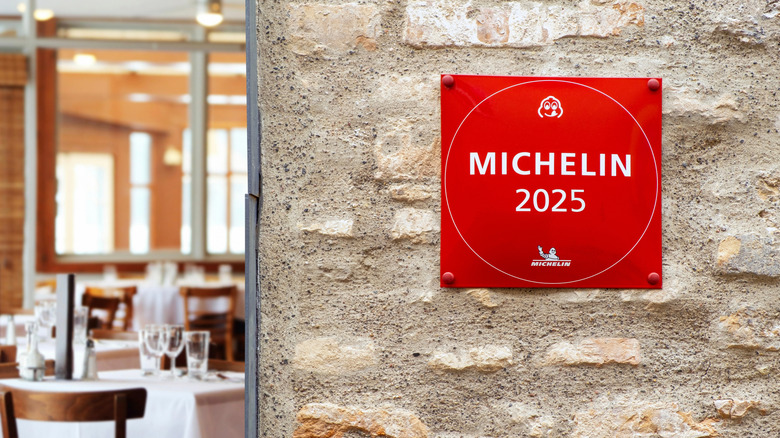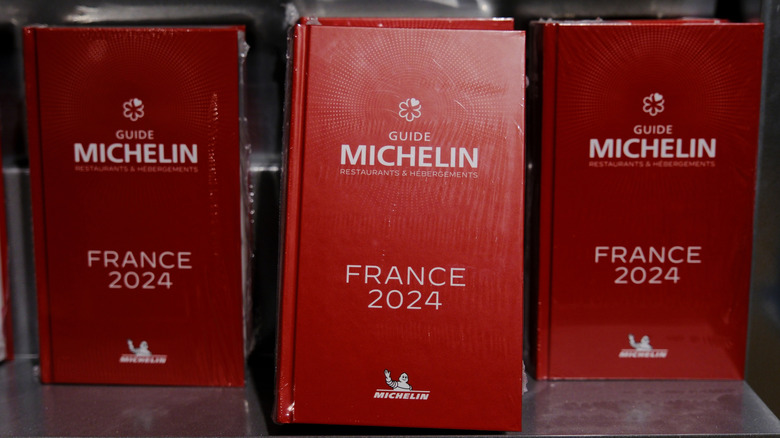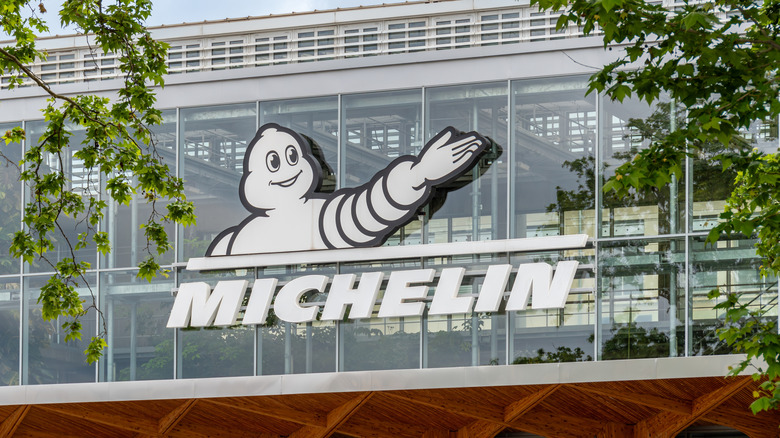What Does The Michelin Star Restaurant Rating Have To Do With A Tire Company?
It's one of those facts that sounds made up: the world's most prestigious restaurant rating system is run by a tire company. And yet, here we are. In the world of fine dining, Michelin is a kingmaker. Earning a Michelin star can put a restaurant on the map globally, and bestow clout that gives the business advantage for decades to come. Losing one can send chefs into existential spirals. The question is begging to be asked: how did this happen?
The story begins in France, in the year 1900. Back then, there were fewer than 3,000 cars on the road. This was a serious problem for brothers André and Édouard Michelin, who had founded the Michelin tire company in 1889. Fewer drivers meant fewer tires wearing out, and slow tire sales meant their business was in jeopardy. But the brothers believed deeply in the future of France's automobile industry, and they had the kind of entrepreneurial imagination that borders on genius. If people weren't driving enough to need new tires, they figured, give them more reasons to drive. And so the first Michelin guidebook was born.
Little red riding book
The original Guide Michelin was a compact red booklet of practical tips for drivers: where to refuel, find repairs, and rest for the night. Restaurants only made the cut if they were attached to hotels, and even then, they weren't rated — just listed. The guide also featured tire care advice, maps, car part ads, and, crucially, local intel that made early driving less of a gamble. Around 35,000 copies were handed out for free, and drivers snatched them up, grateful for a guide that focused on the nitty-gritty of road travel, not rail, like most others of the time.
By the 1920s, cars were more common and drivers hungrier for travel intel. The guide had taken off. Michelin made two key moves: it dropped the ads and slapped on a 7-franc (about $2) price tag. That did little to dampen demand; nearly 100,000 copies still sold each year. Michelin also invited reader feedback, and listened. In response to interest, the guide began to focus on hotel and restaurant reviews around 1926.
It was a smart call. By 1926, the restaurant listings had become so influential that the brothers launched a new venture: hiring full-time undercover critics (now called inspectors) to judge the best restaurants. This was the birth of the iconic Michelin star system. If a restaurant was deemed exemplary in its category, it earned one star. In 1931, that single-star system then grew into the three-star system where one-star means "A very good restaurant in its category," two stars means a place is "Excellent cooking, worth a detour," and three stars means "exceptional cuisine, worth a special journey."
Mission failed successfully
There's no proof the Michelin Guide directly boosted tire sales — but it did something arguably better. It built brand prestige, earned public trust, and helped positioned Michelin as one of the world's major tire brands.
If anything, the Guide — like Michelin's other marketing plays — is a masterclass in brand building. It was just one part of a bigger strategy. The company had already made waves with its charming mascot Bibendum (born in 1898), and gained major clout when Michelin tires won the first-ever Grand Prix de France in 1906. And the effort didn't stop at publishing. Michelin opened offices where tourists could consult experts for custom road trip itineraries and maps. Once company staff began rating hotels, they pushed hoteliers to offer free parking. They even lobbied the government to install road signs for motorists.
From the jump, the brothers were thinking about the long game. "This work comes out with the century," André Michelin wrote in the intro to the first guide, "it will last as long." Safe to say, he wasn't wrong. Print editions are mostly gone now, phased out in 2021. But the guide still runs strong online, and the stars still hold serious weight, more than a century later.


